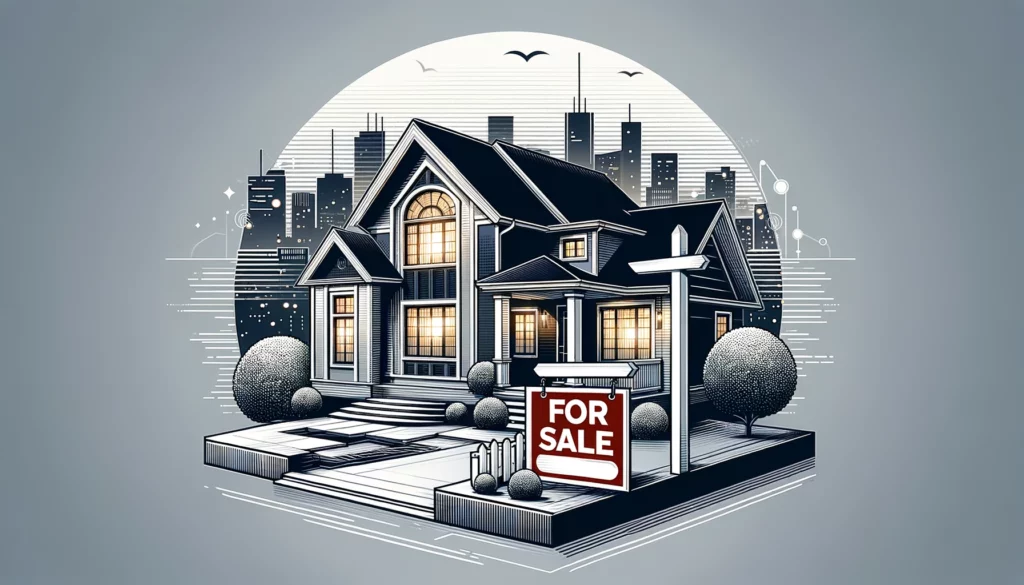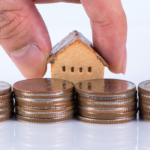
Introduction
Overview of the Toronto Real Estate Market
Toronto, Canada’s largest city, is renowned for its vibrant and dynamic real estate market. This bustling metropolis offers a wealth of opportunities for savvy investors looking to make their mark in the housing sector. With a diverse array of properties ranging from sleek urban condos to charming suburban homes, the market landscape is continuously evolving, presenting both challenges and opportunities for those willing to navigate its complexities. For investors keen on maximizing their returns and building substantial wealth through real estate, the Toronto BRRRR strategy emerges as a highly effective approach.
What is BRRRR?
The BRRRR strategy is a real estate investment approach where you buy a property, rehabilitate it, rent it out, refinance it, and then repeat the process. It’s a method that focuses on adding value to properties and using smart financing to grow your investment portfolio.
Benefits of BRRRR in Toronto’s Market
Toronto’s real estate market presents unique opportunities for the BRRRR strategy. The city’s strong rental demand and the potential for property value appreciation make it an ideal location for this investment approach. By applying the BRRRR strategy, investors can benefit from rental income and long-term capital growth.
Step-by-Step Guide to BRRRR
Buy: Finding the Right Property
The first step in the BRRRR strategy is buying the right property. In Toronto, this means looking for undervalued properties in promising neighborhoods. Conducting thorough market research and possibly working with a local real estate expert to identify the best opportunities is important.
Rehab: Effective Renovation Strategies
After purchasing a property, the next step is rehabilitating it. This involves making necessary repairs and upgrades to increase its value and appeal to tenants. In Toronto, focusing on renovations that are most valued in the local market, such as modern kitchens and bathrooms, can be particularly effective.
Rent: Maximizing Your Rental Income
Once the property is renovated, the next step is renting it out. The goal here is to find reliable tenants willing to pay competitive rent. This involves marketing your property effectively and possibly working with property management companies in Toronto to streamline the process.
Refinance: Navigating Financial Institutions
After stabilizing the property with rental income, the next step is to refinance it. This involves taking out a new mortgage on the property, ideally at a higher value due to the improvements made. In Toronto, it’s important to work with financial institutions that understand the BRRRR strategy and can offer favorable terms.
Repeat: Building Your Real Estate Portfolio
The final step is to repeat the process with additional properties, using your first investment’s equity and cash flow. In Toronto, this means continuously monitoring the market for new opportunities and scaling your investments wisely.
Local Market Analysis
Current Trends in Toronto Real Estate
Understanding current trends in Toronto’s real estate market is key to successfully implementing the BRRRR strategy. This involves monitoring market prices, rental rates, and neighborhood developments.
Identifying High-Potential Areas
To maximize the success of the BRRRR strategy in Toronto, it’s crucial to identify areas with high growth potential. This might include up-and-coming neighborhoods or areas undergoing significant development.
Additional Resources
For readers interested in the Toronto real estate market, particularly in the context of the BRRRR strategy, the following websites offer valuable insights:
- Elevate Realty: This site provides an in-depth look at the Toronto real estate market outlook and trends for 2024. It discusses aspects like interest rates, rental cap rates, and the increasing interest in investing in houses over condos, especially with the government’s focus on the ‘missing middle’. The site also touches on the importance of rental income for investors in the medium term and provides a nuanced view of the market prices and their potential directions.
- Condopoint: This website offers a forecast for Toronto real estate prices in 2024 and 2025, drawing insights from sources like Wowa and Mortgage Sandbox. It emphasizes the influence of new government policies on the real estate market, such as the extension of the Rapid Housing Initiative and the introduction of the Housing Accelerator Fund. The site also discusses the anticipated ‘Homebuyers Bill of Rights’ and its potential impact on the market, making it a valuable resource for understanding policy-driven market changes.
- WOWA.ca: WOWA provides an interactive map and detailed statistics for the Greater Toronto Area (GTA) housing market as of January 2024. It covers the MLS Home Price Index, average sold prices, property type distribution, and regional comparisons within the GTA. This site is beneficial for those looking to understand the dynamics of different property types in the market, including detached and semi-detached homes, townhouses, and condo apartments.
These sites offer comprehensive and up-to-date information that can be crucial for anyone implementing the BRRRR strategy or looking to invest in Toronto’s real estate market. They provide a blend of statistical data, market forecasts, and policy analysis, which are essential for making informed investment decisions.

Financial Considerations
Budgeting for the BRRRR Strategy
Budgeting effectively is the cornerstone of success when implementing the BRRRR strategy, especially if you’re new to real estate investment. This step involves meticulous financial planning to ensure you don’t overspend and that your investments are financially viable. Let’s break it down further:
- Property Prices
- When budgeting for the BRRRR strategy in Toronto, your first consideration should be property prices. Research the local real estate market to understand the price range of properties in different neighborhoods. This knowledge will help you set a realistic budget for property acquisition.
- Renovation Costs
- Renovating a property is a crucial part of the BRRRR process. Calculate renovation costs accurately by obtaining quotes from contractors and factoring in materials, labor, and any unexpected expenses that may arise during the renovation. Beginners should consider starting with properties that require less extensive renovations to minimize costs and risks.
- Rental Costs
- Once your property is ready, you’ll need to budget for the costs associated with renting it out. This includes marketing expenses to attract tenants, background checks, lease agreements, and property management fees if you choose to enlist professional help. Ensure that your rental income covers these expenses and provides a positive cash flow.
- Refinancing Expenses
- Refinancing is a critical step to recycle your capital for future investments. Factor in the costs associated with refinancing, such as appraisal fees, closing costs, and potential prepayment penalties. Be prepared to negotiate favorable terms with lenders to maximize your cash-out refinance.
Understanding ROI and Cash Flow
- Return on Investment (ROI)
- ROI is a fundamental metric in real estate investing, and it’s no different in the BRRRR strategy. ROI measures the profitability of your investment and helps you evaluate whether it’s a wise financial move. In simple terms, ROI calculates the returns you can expect from your investment relative to the initial capital you put in.
- For beginners, calculating ROI involves dividing the net profit (income minus expenses) generated by the property by your initial investment. The higher the ROI, the better the investment. Keep in mind that ROI isn’t just about immediate returns; it should also account for long-term value appreciation.
- Cash Flow
- Cash flow refers to the money generated from your rental property after deducting all expenses, including mortgage payments, taxes, insurance, maintenance, and property management fees. Positive cash flow is crucial because it means your property is generating more income than it costs to maintain. This surplus cash can be reinvested in other properties or used for personal expenses.
- For beginners, understanding cash flow involves tracking your property’s income and expenses meticulously. Positive cash flow can provide financial stability and flexibility, making it easier to grow your real estate portfolio over time.
Take the time to research, plan, and monitor your finances diligently to set yourself up for success in the Toronto real estate market.
Legal and Regulatory Environment
Legal and Regulatory Environment
Navigating the legal and regulatory landscape is a crucial aspect of the BRRRR strategy, especially for beginners. Here’s a closer look at compliance with local laws and regulations and how to navigate zoning and permits in Toronto:
Compliance with Local Laws
- Understanding Local Regulations: Before diving into real estate investment in Toronto, it’s essential to familiarize yourself with the local laws and regulations that govern the property market. This includes zoning laws, building codes, and tenant-landlord regulations. Beginners should start by researching the official city website and consulting with local legal experts to ensure full compliance.
- Zoning Laws: Zoning laws dictate how properties can be used within specific areas of the city. For example, certain zones may be designated for residential, commercial, or mixed-use purposes. Beginners should learn about the zoning classifications in Toronto and how they impact property usage and renovations.
- Building Codes: Building codes outline the minimum standards for construction and safety in properties. Compliance with these codes is essential when renovating properties as part of the BRRRR strategy. It’s advisable to work with contractors who are well-versed in Toronto’s building codes to ensure renovations meet the required standards.
- Tenant-Landlord Regulations: If you plan to rent out properties, understanding tenant-landlord regulations is crucial. This includes knowing tenant rights, rental agreements, and eviction procedures. Be aware that these regulations may change over time, so staying informed is key.
Navigating Zoning and Permits
- The Rehab Phase: During the rehab phase of the BRRRR strategy, you may need to make structural changes to the property. This often requires permits from the city. Beginners should be prepared for this process, which can be complex and time-consuming.
- Working with Professionals: Given the intricacies of Toronto’s zoning and permit system, beginners should work with professionals who have experience in the city’s real estate market. This includes hiring knowledgeable contractors, architects, and real estate agents who can guide you through the process.
- Due Diligence: Before purchasing a property, conduct thorough due diligence to ensure it aligns with zoning regulations and has the potential for the renovations you plan. Working with a real estate agent who specializes in investment properties can be invaluable in this regard.
- Staying Updated: Toronto’s zoning and permit regulations may evolve, impacting your investment plans. Beginners should stay updated on any changes and be prepared to adjust their strategies accordingly.
Conclusion
In summary, Toronto’s real estate market presents a prime opportunity for investors utilizing the BRRRR strategy. This approach, focusing on buying, rehabilitating, renting, refinancing, and repeating, is ideally suited to the city’s strong rental demand and potential for property appreciation. Success hinges on careful selection of undervalued properties, strategic renovations, and smart financing. By closely monitoring market trends and identifying high-potential areas, investors can effectively grow their portfolios and achieve substantial wealth in Toronto’s dynamic real estate landscape. Staying informed and adaptable is key to leveraging the full potential of the BRRRR strategy in this vibrant market.
Commonly Asked Questions
- Does the BRRR Method Work in Canada?
- Absolutely! The BRRR method—Buy, Rehab, Rent, Refinance, Repeat—is a proven real estate investment strategy that works effectively across Canada. Given the country’s diverse real estate market, from bustling metropolitan areas like Toronto and Vancouver to growing cities such as Calgary and Halifax, the BRRR method offers a versatile approach to building wealth. By leveraging the unique opportunities in different regions, investors can capitalize on the potential for property value appreciation and strong rental demand, making the BRRR strategy a viable option for Canadian real estate investors.
- What is the 1% Rule in Real Estate Canada?
- The 1% rule is a guideline used by real estate investors to assess the potential profitability of rental properties. In the context of Canadian real estate, this rule suggests that a property’s monthly rent should be at least 1% of its purchase price. For example, if you buy a property for $300,000, the monthly rent should be $3,000 or more to meet the criteria. This rule helps investors quickly evaluate rental income potential, although it’s important to consider local market conditions and expenses for a comprehensive analysis.
- What are the Downsides of the BRRR Strategy?
- While the BRRR strategy offers significant opportunities for wealth generation, it also comes with its challenges. Key downsides include the need for substantial upfront capital, the risks associated with rehabilitating properties, potential cash flow issues during the rehab phase, and the complexity of refinancing. Additionally, market fluctuations can impact the success of the strategy, and investors must be prepared for the possibility of not meeting their refinancing criteria, which could affect their ability to repeat the process effectively.
- What is an Example of a BRRR Strategy?
- An example of the BRRR strategy in action involves purchasing a distressed property for $200,000, investing $50,000 in renovations to improve its value and appeal, and then renting it out for $2,500 per month. After stabilizing the rental income, the property is refinanced at a new appraised value of $300,000, allowing the investor to pull out most of the invested capital. This freed-up capital can then be used to repeat the process with a new property, thereby expanding the investor’s portfolio and increasing their passive income.
What are the New Rules for Buying Property in Canada?
Recent changes to Canadian real estate regulations aim to make housing more accessible and reduce speculative buying. Notable new rules include the implementation of a foreign buyer’s ban on residential properties to curb price inflation and the introduction of measures to increase transparency in real estate transactions. Additionally, there are increased efforts to crack down on money laundering in the property market. Prospective buyers should consult the latest government guidelines or a real estate professional to understand how these changes may affect their purchasing plans.
How Long Do I Need to Live in a House to Avoid Capital Gains in Canada?
In Canada, if the property is your principal residence, you may be exempt from paying capital gains tax when you sell it. To qualify for the principal residence exemption, you must have lived in the house for at least a year. However, the rules are nuanced, and specific conditions apply, such as the land size and usage. It’s important to consult with a tax professional to navigate these rules and plan your property investments accordingly, ensuring compliance with Canadian tax laws while optimizing your investment strategy.
Explore More in Alternative Finance
If you’re intrigued by the strategic depth of the Toronto BRRRR strategy in real estate investment, there’s a whole world of alternative finance topics that might capture your interest. These areas offer innovative ways to approach investing, wealth building, and financial management outside the traditional stock and bond markets. Here are a few you might explore:
- Real Estate Crowdfunding: Dive into the world of collective investment opportunities in real estate, where you can participate in larger projects with smaller capital outlays.
- Peer-to-Peer Lending: Learn about lending money directly to individuals or businesses through online platforms, bypassing traditional financial institutions.
- Cryptocurrency Investments: Unpack the complexities of investing in digital currencies and blockchain technology, a cutting-edge and volatile market.





